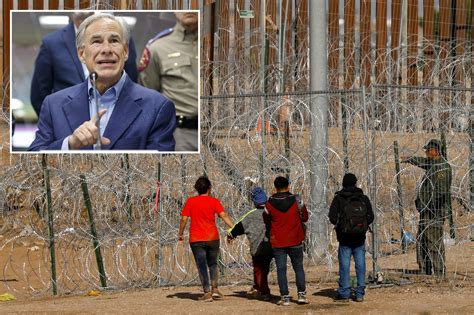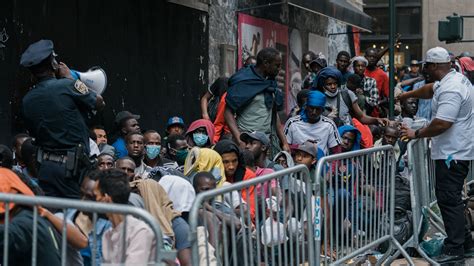
Tesla’s planned robotaxi rollout is facing increased scrutiny from U.S. regulators, who are raising safety concerns about the autonomous vehicle technology.
U.S. regulators are intensifying their oversight of Tesla’s upcoming robotaxi launch, casting a shadow over the ambitious project due to unresolved safety issues and technological uncertainties. The National Highway Traffic Safety Administration (NHTSA) is reportedly focusing on the capabilities and safety mechanisms of Tesla’s autonomous driving system, particularly concerning its ability to handle unpredictable real-world scenarios.
The increased regulatory attention arrives as Tesla CEO Elon Musk has repeatedly touted the arrival of fully autonomous driving, a key component of the company’s future revenue strategy. During Tesla’s Q1 2024 earnings call, Musk stated, “Tesla will unveil its Robotaxi on 8/8,” underscoring the urgency and importance of this project to Tesla’s strategic goals. However, skepticism remains among safety advocates and regulators, who emphasize the need for rigorous testing and validation before deploying autonomous vehicles on public roads.
The core of the issue revolves around the readiness of Tesla’s Full Self-Driving (FSD) system. Despite its name, FSD is currently classified as a Level 2 autonomous system by NHTSA, meaning it requires active driver supervision and intervention. The leap to a true Level 4 or Level 5 autonomous vehicle, capable of operating without human intervention in most or all conditions, is a significant technological hurdle.
“There’s a lot of skepticism that Tesla’s technology is ready for full autonomy,” said one industry analyst. “The regulatory agencies are being extra cautious, as they should be.”
Regulators are particularly concerned about Tesla’s Autopilot and FSD systems’ performance in complex driving situations, such as navigating construction zones, reacting to unexpected pedestrian movements, and handling adverse weather conditions. NHTSA has been investigating numerous Tesla crashes involving Autopilot, some of which have resulted in serious injuries and fatalities.
Adding to the regulatory pressure, the National Transportation Safety Board (NTSB) has repeatedly criticized Tesla’s Autopilot system for its design limitations and the potential for driver misuse. The NTSB has made several recommendations to NHTSA to strengthen its oversight of autonomous driving systems and implement stricter safety standards.
In response to regulatory concerns, Tesla has emphasized its commitment to safety and continuous improvement of its autonomous driving technology. The company has been collecting vast amounts of real-world driving data through its fleet of vehicles, which it uses to train and refine its AI algorithms. Tesla also argues that its autonomous driving systems have the potential to significantly reduce traffic accidents caused by human error.
However, regulators remain unconvinced that Tesla’s current systems are safe enough for widespread deployment of robotaxis. The primary challenge is ensuring that autonomous vehicles can reliably and consistently handle the unpredictable nature of real-world driving conditions. This requires not only advanced AI algorithms but also robust sensor systems, redundant safety mechanisms, and comprehensive testing and validation procedures.
The regulatory scrutiny surrounding Tesla’s robotaxi rollout highlights the complex challenges and ethical considerations involved in deploying autonomous vehicle technology. While the potential benefits of robotaxis, such as increased mobility, reduced traffic congestion, and lower transportation costs, are significant, these benefits must be weighed against the potential risks to public safety.
The upcoming months will be crucial as Tesla works to address regulatory concerns and demonstrate the safety and reliability of its autonomous driving system. The outcome of this regulatory review could have significant implications for the future of autonomous vehicles and the broader transportation industry.
The regulatory investigation includes a comprehensive review of Tesla’s safety protocols, testing methodologies, and the overall design of its autonomous driving system. Regulators are seeking detailed information on how Tesla plans to ensure the safety of passengers, pedestrians, and other road users in the event of a system failure or unexpected event.
Furthermore, the investigation is examining the effectiveness of Tesla’s driver monitoring system, which is designed to detect and prevent driver distraction or misuse of Autopilot. Regulators are concerned that the current system may not be adequate to prevent drivers from becoming over-reliant on Autopilot or failing to intervene in critical situations.
The scrutiny also extends to Tesla’s over-the-air software updates, which allow the company to remotely update the functionality of its autonomous driving system. Regulators want to ensure that these updates are properly tested and validated before being deployed to the entire fleet of vehicles, and that they do not introduce any new safety risks.
Tesla’s Autopilot system has been under investigation by NHTSA for several years. In 2021, the agency opened a formal investigation into Tesla’s Autopilot system after a series of crashes involving Tesla vehicles and emergency vehicles. The investigation has since been expanded to include more than 830,000 Tesla vehicles.
The investigation has focused on the system’s ability to detect and respond to emergency vehicles, as well as its overall performance in various driving conditions. NHTSA has also been examining Tesla’s driver monitoring system and its effectiveness in preventing driver distraction or misuse of Autopilot.
In addition to the NHTSA investigation, Tesla is also facing scrutiny from other regulatory agencies and safety organizations. The NTSB has repeatedly criticized Tesla’s Autopilot system for its design limitations and the potential for driver misuse. The agency has made several recommendations to NHTSA to strengthen its oversight of autonomous driving systems and implement stricter safety standards.
The European New Car Assessment Programme (Euro NCAP), a leading independent safety organization, has also raised concerns about Tesla’s Autopilot system. Euro NCAP has criticized the system for its lack of transparency and its potential to mislead drivers into believing that it is more capable than it actually is.
Tesla has defended its Autopilot system, arguing that it is designed to assist drivers and improve safety. The company has said that it is continuously working to improve the system’s performance and address any safety concerns.
However, regulators remain skeptical that Tesla’s current systems are safe enough for widespread deployment of robotaxis. The primary challenge is ensuring that autonomous vehicles can reliably and consistently handle the unpredictable nature of real-world driving conditions. This requires not only advanced AI algorithms but also robust sensor systems, redundant safety mechanisms, and comprehensive testing and validation procedures.
The regulatory scrutiny surrounding Tesla’s robotaxi rollout highlights the complex challenges and ethical considerations involved in deploying autonomous vehicle technology. While the potential benefits of robotaxis, such as increased mobility, reduced traffic congestion, and lower transportation costs, are significant, these benefits must be weighed against the potential risks to public safety.
The upcoming months will be crucial as Tesla works to address regulatory concerns and demonstrate the safety and reliability of its autonomous driving system. The outcome of this regulatory review could have significant implications for the future of autonomous vehicles and the broader transportation industry.
The safety concerns raised by regulators echo previous criticisms of Tesla’s approach to autonomous driving. Critics have accused Tesla of prioritizing speed and innovation over safety, and of releasing features before they are fully tested and validated.
Tesla has been criticized for its use of beta testing, which involves releasing unfinished software to a limited number of users for real-world testing. Critics argue that this approach puts the safety of the public at risk, as beta testers may encounter unexpected problems or dangerous situations.
Tesla has also been criticized for its lack of transparency. The company has been accused of withholding information about accidents involving its Autopilot system, and of downplaying the risks associated with its technology.
In response to these criticisms, Tesla has said that it is committed to safety and that it takes all safety concerns seriously. The company has said that it is continuously working to improve its autonomous driving technology and to address any safety issues that may arise.
The company also uses data collected from its fleet of vehicles to improve its AI algorithms and identify potential safety hazards. However, regulators and safety advocates argue that this data collection is not enough to ensure the safety of autonomous vehicles. They say that more rigorous testing and validation are needed before these vehicles are deployed on public roads.
The regulatory scrutiny surrounding Tesla’s robotaxi rollout comes at a time when the autonomous vehicle industry is facing increasing challenges. Several companies have scaled back their autonomous vehicle programs in recent years, citing technical difficulties, regulatory hurdles, and safety concerns.
Waymo, a subsidiary of Alphabet, has been testing its autonomous vehicles in several cities for several years. However, the company has yet to launch a fully commercial robotaxi service. Cruise, a subsidiary of General Motors, had its autonomous vehicle testing permit suspended in California after a series of accidents involving its vehicles. The company has since paused its autonomous vehicle operations across the country.
The challenges faced by Waymo and Cruise highlight the difficulties involved in developing and deploying autonomous vehicle technology. These companies have invested billions of dollars in autonomous vehicle research and development, but they have yet to overcome the technical, regulatory, and safety challenges that stand in the way of widespread adoption.
The regulatory scrutiny surrounding Tesla’s robotaxi rollout is likely to further slow down the development and deployment of autonomous vehicles. Regulators are likely to take a more cautious approach to approving autonomous vehicle technology, and they may impose stricter safety standards and testing requirements.
This could make it more difficult for companies to develop and deploy autonomous vehicles, and it could delay the arrival of robotaxis on public roads. However, regulators argue that a cautious approach is necessary to ensure the safety of the public. They say that the potential benefits of autonomous vehicles are not worth the risk of putting unsafe technology on the road.
The future of autonomous vehicles is uncertain. It is unclear when, or even if, autonomous vehicles will be widely adopted. However, the regulatory scrutiny surrounding Tesla’s robotaxi rollout highlights the importance of safety and regulation in the development of this technology.
Tesla’s Autonomous Driving Technology: A Deeper Dive
To fully understand the regulatory concerns, it’s crucial to examine Tesla’s autonomous driving technology, specifically Autopilot and Full Self-Driving (FSD).
- Autopilot: This is the standard driver-assistance system included in all new Tesla vehicles. It provides features like adaptive cruise control (maintaining a set speed and distance from the vehicle ahead) and lane keeping assist (automatically steering the vehicle within its lane). It is classified as Level 2 autonomy, requiring constant driver supervision.
- Full Self-Driving (FSD): This is an optional, more advanced system that builds upon Autopilot. FSD aims to provide a more comprehensive suite of autonomous features, including automatic lane changes, navigating on- and off-ramps, and automatic parking. It is also classified as Level 2 autonomy, despite its name suggesting full autonomy.
The distinction is critical. Level 2 autonomy requires the driver to remain attentive and ready to take control at any moment. The system is not designed to handle all driving situations, and driver intervention is often necessary. The numerous crashes involving Tesla vehicles using Autopilot or FSD highlight the limitations of these systems and the potential for driver misuse.
The Role of NHTSA and NTSB
The National Highway Traffic Safety Administration (NHTSA) and the National Transportation Safety Board (NTSB) play crucial roles in ensuring the safety of vehicles on U.S. roads.
- NHTSA: This agency is responsible for setting safety standards for vehicles and investigating safety defects. It has the authority to issue recalls and impose penalties on manufacturers that violate safety regulations. NHTSA’s investigation into Tesla’s Autopilot system is a significant step toward determining whether the system poses an unreasonable risk to public safety.
- NTSB: This independent agency investigates transportation accidents, including those involving motor vehicles. The NTSB does not have the authority to issue regulations, but it can make recommendations to NHTSA and other government agencies to improve safety. The NTSB has been critical of Tesla’s Autopilot system and has called for stricter oversight of autonomous driving technology.
The collaboration between NHTSA and NTSB is essential for ensuring that autonomous vehicles are safe before they are deployed on public roads. The agencies must work together to identify potential safety hazards, develop effective regulations, and hold manufacturers accountable for any safety defects.
Ethical Considerations
The deployment of robotaxis raises a number of ethical considerations. One of the most pressing is the question of liability in the event of an accident. If a robotaxi causes an accident, who is responsible? Is it the manufacturer of the vehicle, the owner of the robotaxi fleet, or the software developer?
Another ethical consideration is the potential impact of robotaxis on employment. Robotaxis could displace millions of professional drivers, including taxi drivers, truck drivers, and delivery drivers. This could have significant economic and social consequences.
Finally, there is the question of how robotaxis should be programmed to handle unavoidable accidents. In some situations, an accident is inevitable, and the robotaxi must choose between two or more undesirable outcomes. How should the robotaxi be programmed to make these decisions? Should it prioritize the safety of its passengers, pedestrians, or other road users? These are complex ethical questions that must be addressed before robotaxis are widely deployed.
The Path Forward
The path forward for Tesla’s robotaxi rollout is uncertain. The company faces significant technical, regulatory, and ethical challenges. To successfully deploy robotaxis, Tesla must address these challenges and convince regulators and the public that its technology is safe and reliable.
This will require significant investment in research and development, as well as a commitment to transparency and collaboration. Tesla must work with regulators, safety organizations, and other stakeholders to develop effective safety standards and testing procedures. The company must also be willing to share data and information about its autonomous driving technology.
Ultimately, the success of Tesla’s robotaxi rollout will depend on its ability to build trust with regulators and the public. This will require a long-term commitment to safety and a willingness to prioritize safety over speed and innovation.
Frequently Asked Questions (FAQ)
-
What is a robotaxi? A robotaxi is a self-driving taxi that can transport passengers without a human driver. It uses autonomous driving technology, including sensors, cameras, and artificial intelligence, to navigate roads and make driving decisions.
-
Why are regulators raising red flags about Tesla’s robotaxi rollout? Regulators are concerned about the safety of Tesla’s autonomous driving system, particularly its ability to handle unpredictable real-world scenarios. They cite previous crashes involving Tesla’s Autopilot system and the need for more rigorous testing and validation before deploying robotaxis on public roads. “There’s a lot of skepticism that Tesla’s technology is ready for full autonomy,” said one industry analyst.
-
What is Tesla’s Full Self-Driving (FSD) system? Tesla’s Full Self-Driving (FSD) system is an optional, advanced driver-assistance system that aims to provide a more comprehensive suite of autonomous features than the standard Autopilot system. However, it is still classified as Level 2 autonomy, requiring active driver supervision and intervention.
-
What are the key concerns regulators have about Tesla’s autonomous driving technology? Regulators are concerned about the system’s performance in complex driving situations, such as navigating construction zones, reacting to unexpected pedestrian movements, and handling adverse weather conditions. They are also examining the effectiveness of Tesla’s driver monitoring system and the safety of over-the-air software updates.
-
What are the potential ethical considerations of deploying robotaxis? Ethical considerations include liability in the event of an accident, the potential impact on employment for professional drivers, and how robotaxis should be programmed to handle unavoidable accidents, including prioritizing safety among passengers, pedestrians, and other road users.
-
What is NHTSA’s role in regulating autonomous vehicles?
NHTSA, the National Highway Traffic Safety Administration, is responsible for setting safety standards for vehicles and investigating safety defects. It has the authority to issue recalls and impose penalties on manufacturers that violate safety regulations. Its investigation into Tesla’s Autopilot system will determine whether the system poses an unreasonable risk to public safety.
- What is NTSB’s role in regulating autonomous vehicles?
The National Transportation Safety Board (NTSB) investigates transportation accidents, including those involving motor vehicles. While it cannot issue regulations, it makes recommendations to NHTSA and other government agencies to improve safety. It has been critical of Tesla’s Autopilot system, calling for stricter oversight of autonomous driving technology.
- What are the potential benefits of robotaxis?
Robotaxis offer several potential benefits, including increased mobility for those who cannot drive, reduced traffic congestion, lower transportation costs, and potentially fewer accidents due to the elimination of human error.
- What is Level 2 autonomy?
Level 2 autonomy refers to advanced driver-assistance systems that can control both steering and acceleration/deceleration under certain conditions. However, the driver must remain attentive and be ready to take control at any moment. Systems like Tesla’s Autopilot and FSD, despite their names, are currently classified as Level 2.
- What are some of the safety issues found in Tesla’s auto-pilot system by safety regulators and organizations?
Safety regulators and organizations have identified the following issues: failure to effectively detect emergency vehicles, limitations in design that could potentially be misused by drivers and a lack of transparency, possibly misleading drivers into assuming it is more capable than it is in reality.
- Has Tesla been responsive and cooperative with NHTSA and other regulators?
That is subject to debate. Tesla claims it is committed to safety, and takes all safety concerns seriously. However, critics suggest that Tesla has been withholding information about accidents involving its Autopilot system, and minimizing the risks of its technologies. It is likely that NHTSA wants even greater transparency, so regulators can ensure that the driver is protected.
- Has the robotaxi caused fatal accidents?
The article does not say, but fatal accidents have been caused by the auto-pilot system. As reported by Car and Driver magazine, “Of the 46 fatal crashes involving Level 1 or Level 2 driver-assist systems since 2016, 40 have occurred in Teslas, according to NHTSA. “
- Why does Tesla use beta testing?
Beta testing involves releasing unfinished software to a limited number of users for real-world testing. Critics argue that this is unsafe, because beta testers may encounter unexpected or dangerous situations.
- Has beta testing been effective for Tesla?
Tesla believes that beta testing is an effective way to obtain data to enhance its AI technologies. However, regulators and safety advocates argue that this data collection is not enough to ensure safety. They believe rigorous testing and validation are needed before these vehicles are allowed on the road.
- What other companies are experiencing problems with their version of the robotaxi?
Waymo, a subsidiary of Alphabet, has been testing its autonomous vehicles in several cities for several years, but they have yet to launch a full commercial robotaxi service. Cruise, a subsidiary of General Motors, had its autonomous vehicle testing permit suspended in California, and subsequently paused its autonomous vehicle operations across the country.
- What does Elon Musk have to say about all this?
During Tesla’s Q1 2024 earnings call, Musk stated, “Tesla will unveil its Robotaxi on 8/8,” underscoring the urgency and importance of this project to Tesla’s strategic goals. However, he has not yet commented on the current regulatory scrutiny.
- Are there any privacy regulations regarding the use of robotaxis?
As far as privacy, robotaxis use cameras, microphones, and other sensors to monitor passengers in the vehicle, which causes some concerns about privacy and data security. Therefore, regulators are looking at what measures companies take to protect passenger data and prevent it from being used for unauthorized purposes.
- What safety measures and protocols are in place?
Robotaxi systems feature multiple redundant systems to prevent malfunction and to guarantee passenger safety. The sensor systems include cameras, radar, and lidar, that capture the environment around the vehicle, and provide a thorough picture of the vehicle’s surroundings. In addition, some vehicles have a remote operator to monitor the vehicles.
- What are the long-term projections for robotaxis?
If autonomous driving improves to an acceptable safety level, robotaxis could offer cost-effective and convenient transportation. There could be lower transportation costs, reduced traffic congestion and increased mobility for those who can’t drive. As the price for sensors, software and hardware decline, the cost will be lower, and more people will be able to drive the car.
- Has any government proposed a new set of rules?
As reported by the National Law Review, “In September 2023, the U.S. Department of Transportation (DOT) announced a Notice of Proposed Rulemaking (NPRM) that would require states to report all crashes involving vehicles equipped with Automated Driving Systems (ADS) or Advanced Driver Assistance Systems (ADAS).” “The NPRM outlines the minimum data elements states would be required to collect and report to NHTSA.”









